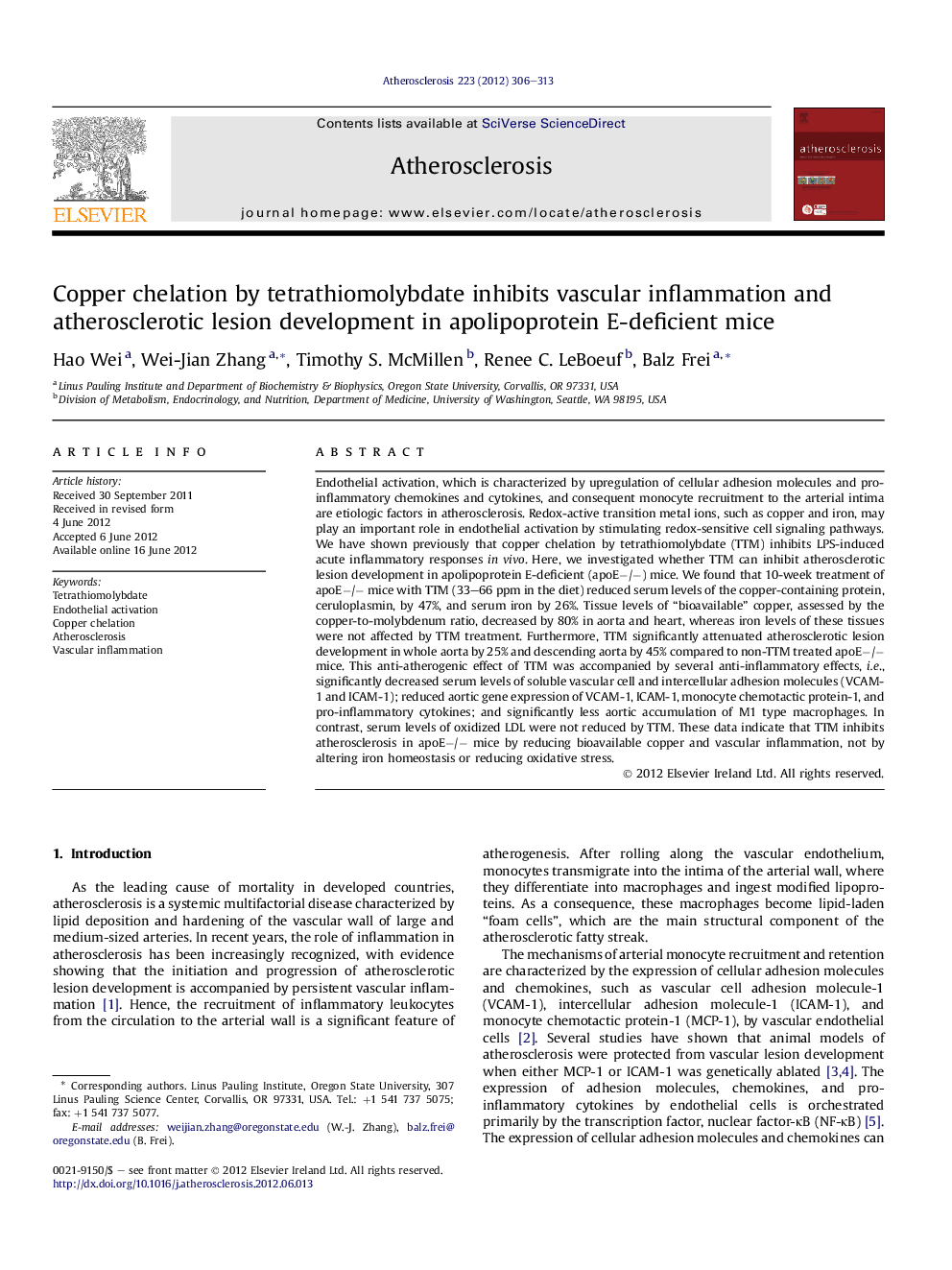| کد مقاله | کد نشریه | سال انتشار | مقاله انگلیسی | نسخه تمام متن |
|---|---|---|---|---|
| 5948523 | 1172380 | 2012 | 8 صفحه PDF | دانلود رایگان |

Endothelial activation, which is characterized by upregulation of cellular adhesion molecules and pro-inflammatory chemokines and cytokines, and consequent monocyte recruitment to the arterial intima are etiologic factors in atherosclerosis. Redox-active transition metal ions, such as copper and iron, may play an important role in endothelial activation by stimulating redox-sensitive cell signaling pathways. We have shown previously that copper chelation by tetrathiomolybdate (TTM) inhibits LPS-induced acute inflammatory responses in vivo. Here, we investigated whether TTM can inhibit atherosclerotic lesion development in apolipoprotein E-deficient (apoEâ/â) mice. We found that 10-week treatment of apoEâ/â mice with TTM (33-66 ppm in the diet) reduced serum levels of the copper-containing protein, ceruloplasmin, by 47%, and serum iron by 26%. Tissue levels of “bioavailable” copper, assessed by the copper-to-molybdenum ratio, decreased by 80% in aorta and heart, whereas iron levels of these tissues were not affected by TTM treatment. Furthermore, TTM significantly attenuated atherosclerotic lesion development in whole aorta by 25% and descending aorta by 45% compared to non-TTM treated apoEâ/â mice. This anti-atherogenic effect of TTM was accompanied by several anti-inflammatory effects, i.e., significantly decreased serum levels of soluble vascular cell and intercellular adhesion molecules (VCAM-1 and ICAM-1); reduced aortic gene expression of VCAM-1, ICAM-1, monocyte chemotactic protein-1, and pro-inflammatory cytokines; and significantly less aortic accumulation of M1 type macrophages. In contrast, serum levels of oxidized LDL were not reduced by TTM. These data indicate that TTM inhibits atherosclerosis in apoEâ/â mice by reducing bioavailable copper and vascular inflammation, not by altering iron homeostasis or reducing oxidative stress.
⺠The copper chelator, tetrathiomolybdate, reduced bioavailable copper in apoEâ/â mice. ⺠No severe anemia or altered iron homeostasis in aorta and heart were observed. ⺠Atherosclerosis in the descending aorta was attenuated by 45%. ⺠Inflammatory mediators, but not LDL oxidation, were significantly reduced. ⺠Copper appears to play a critical role in vascular inflammation and atherosclerosis.
Journal: Atherosclerosis - Volume 223, Issue 2, August 2012, Pages 306-313